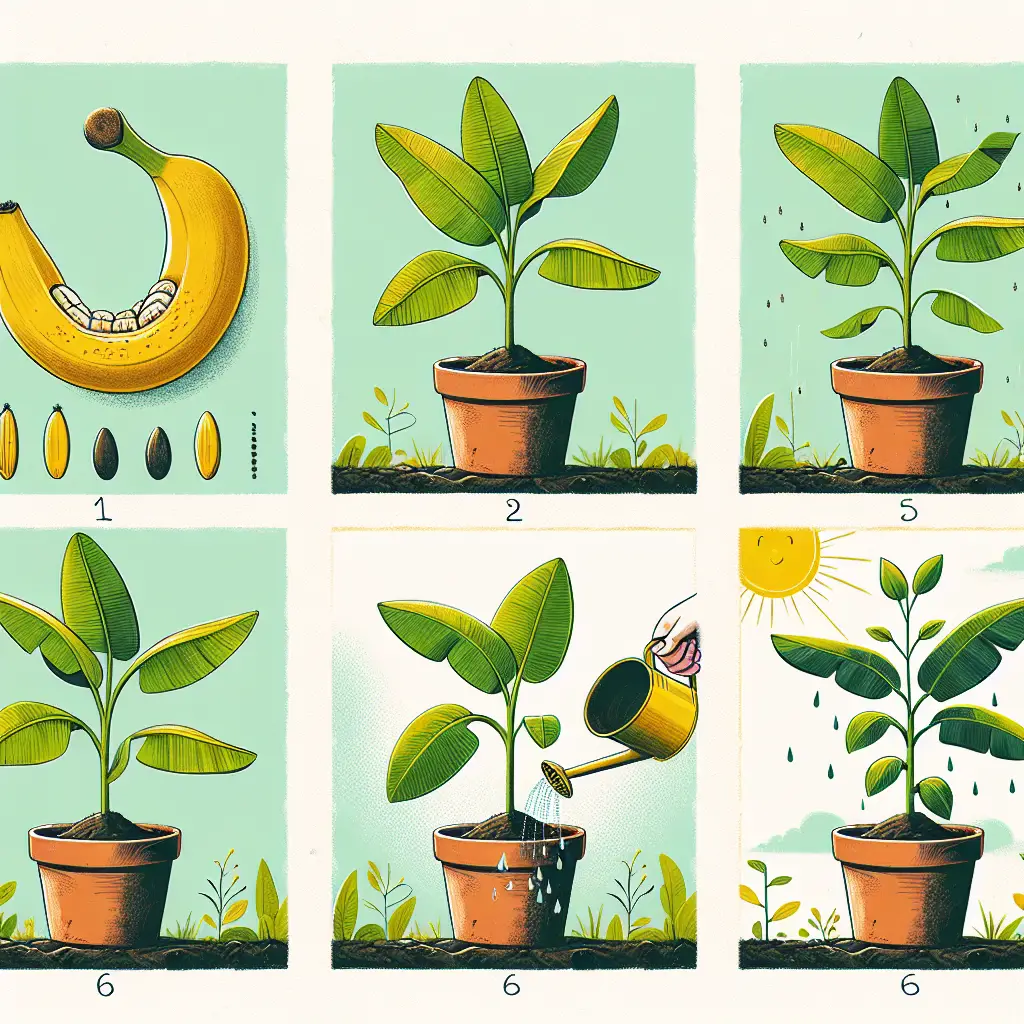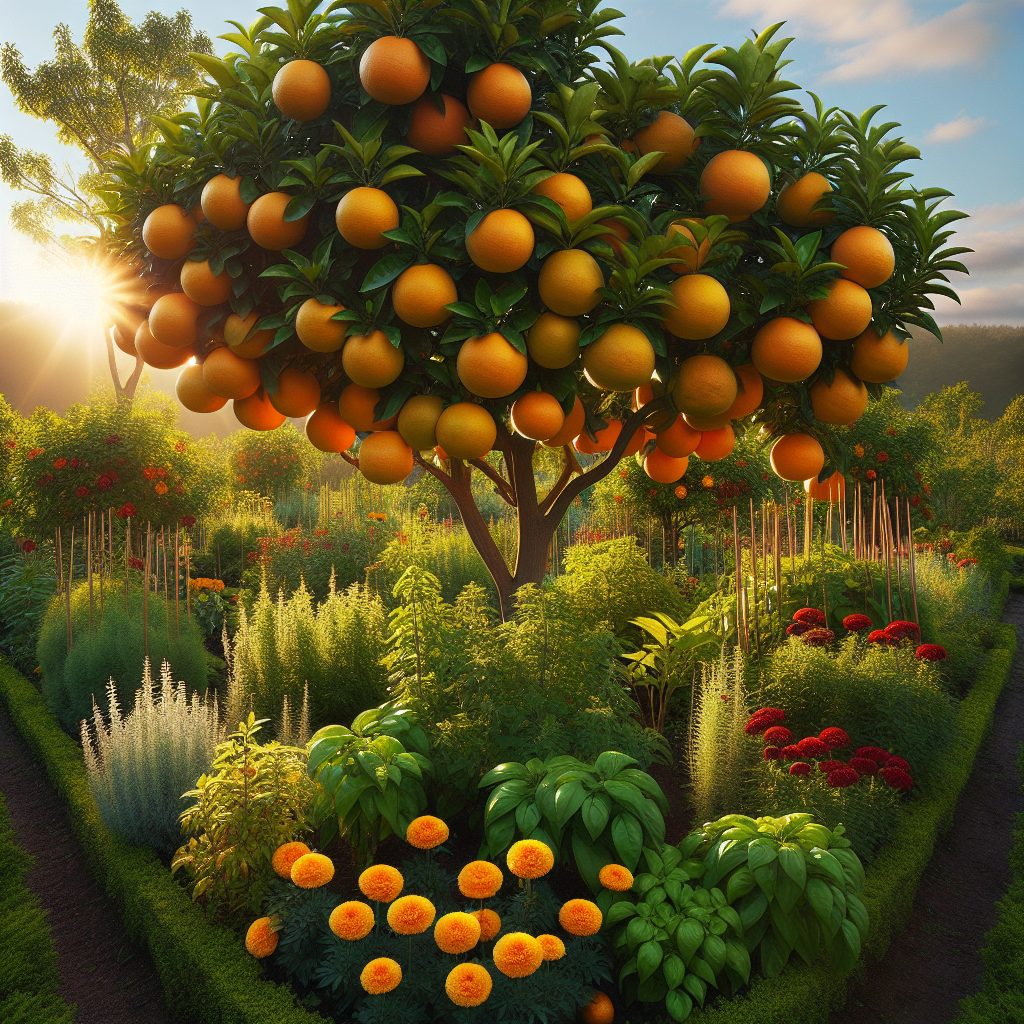How to Grow and Care for an Indoor Banana Plant
Updated April 7, 2025 at 5:17 am

Indoor Banana Plant Overview
- Pet Friendly: Banana plants are non-toxic and generally safe around pets. However, it’s always a good idea to discourage pets from nibbling on any houseplants.
- Light Requirements: Banana plants require bright, indirect light. Direct sunlight may scorch the leaves, so filtered light is best.
- Watering: These tropical plants enjoy consistent moisture. Water when the top inch of soil feels dry to the touch.
- Humidity: High humidity levels mimic the banana plant’s natural environment. Aim for humidity levels above 50% if possible.
- Temperature: Warmth is essential. Keep the indoor temperature between 65-80°F (18-27°C) for optimal growth.
- Difficulty: Growing a banana plant indoors is moderately easy. They do need a bit more care than your average houseplant, but they’re quite resilient with the right conditions.
Selecting the Right Variety for Indoor Cultivation
Before diving into care routines, let’s chat about choosing your indoor banana plant. You might think, “A banana plant’s a banana plant, right?” Not quite! Some varieties, like the Dwarf Cavendish or Orinoco, are better suited for indoor growth due to their smaller size. Finding the right variety can make all the difference in your plant parenting journey.
So how do we pick the perfect banana buddy? Look for dwarf or ornamental varieties that thrive indoors. Personally, I’ve had great success with the ‘Super Dwarf Cavendish’. It fits comfortably in my living room and even produces fruit – a sweet bonus!
Find This and More on Amazon
Creating an Ideal Environment
Imagine the banana plant’s native tropical paradise – your goal is to replicate that environment as closely as possible. Lighting, as mentioned earlier, is critical. A sun-drenched spot by the window that filters harsh rays with sheer curtains could be banana plant heaven. Avoid locations where cold drafts or sudden temperature changes might occur – these can stress your plant out.
When it comes to humidity, let’s get creative. If your home’s air tends to be on the drier side, you could use a humidifier or place your plant on a shallow tray filled with pebbles and water (ensuring the pot isn’t sitting directly in the water). This can create a mini-atmosphere of moisture for your leafy friend.
The Perfect Potting Mix
Now, what do these plants like to sink their roots into? A well-draining potting mix is key. But not just any mix will do. You’ll want something that retains moisture without becoming soggy. I’ve used a mix of potting soil, perlite, and peat with excellent results. This combo makes for a happy banana plant that grows vigorously and is less prone to root rot.
If mixing soil isn’t your thing, no worries! I’ve heard good things about the FoxFarm Ocean Forest Potting Soil. It’s well-aerated and has a good structure for tropical plants like our beloved banana.
Pros of FoxFarm Ocean Forest Potting Soil
- It’s ready to use right out of the bag
- Includes earthworm castings and sea-going fish and crab meal for natural fertilization
- Has a light texture that’s ideal for root growth
Cons of FoxFarm Ocean Forest Potting Soil
- May be pricier than making your own mix
- Some people find it too nutrient-rich for seedlings (though this won’t be an issue for an established banana plant)
Watering Your Indoor Banana Plant
Maintaining the right moisture level is a bit of an art form with banana plants. They’re pretty thirsty and hate to dry out completely, but they also don’t like wet feet. It’s a delicate balance. The general rule of thumb is to water when the top inch of soil is dry. Trust me, once you get the hang of it, it’ll become second nature.
Regular watering is more crucial during the growing season. In the winter, you can ease off as the plant’s growth slows down. And always try to use lukewarm water – cold water can shock the roots and slow down growth.
Now, let’s get into the specifics of watering. Your banana plant will need more water if it’s receiving lots of light and heat, which is likely given its love for sunny spots. The sign that you’re watering well? A happy plant with lush, green leaves. If you’re seeing yellowing or droopy leaves, it might be an SOS signal that something’s off with your watering game.
Feeding and Fertilizing for Growth
Your indoor banana plant will need food to flourish. That’s where fertilizer comes into play. Opt for a balanced, water-soluble fertilizer, something with equal parts nitrogen, phosphorus, and potassium, often labeled as ’10-10-10′ or ’20-20-20.’ During the active growing period (spring through summer), you’ll want to feed your plant once a month.
I’ve noticed that using a slow-release fertilizer like Osmocote Smart-Release Plant Food has made my life easier. It gradually feeds the plant over time, which is perfect since I can sometimes forget to stick to a strict feeding schedule.
Pros of Osmocote Smart-Release Plant Food
- Easy to apply with no mixing required
- It provides consistent nutrients over several months
- Gentle on the plant, reducing the risk of fertilizer burn
Cons of Osmocote Smart-Release Plant Food
- May not provide as rapid growth as liquid fertilizers
- Higher upfront cost compared to other fertilizers
Find This and More on Amazon
Caring for the Leaves and Preventing Pests
Those big, beautiful leaves are a banana plant’s crowning glory, so keeping them clean is a must. Dust can clog up the pores of the leaves, making it hard for the plant to breathe. A gentle wipe down with a damp cloth every now and then helps maintain their glossy sheen and keep the photosynthesis process running smoothly.
As much as we love our indoor jungles, so do pests. Spider mites, aphids, and scale insects can all take a liking to your banana plant. Regular inspection and cleaning of the leaves will help prevent infestations. And if you do spot trouble, get ahead of it quickly with insecticidal soap or neem oil treatments.
Propagating Your Banana Plant
Propagating your banana plant can seem intimidating, but it’s actually quite doable. Banana plants produce pups or small suckers that can be separated from the parent plant and grown as new plants. It sounds a bit like plant surgery, but it’s a pretty straightforward process. When the pups are a decent size and have their own roots, gently separate them from the mother plant and pot them up separately.
And here’s a little insider tip: rooting hormone can help those new pups establish their roots more quickly. Garden Safe TakeRoot Rooting Hormone is a popular choice I’ve seen many plant enthusiasts swear by. It encourages quicker rooting, which equals a healthy start for your new banana plants.
Pros of Garden Safe TakeRoot Rooting Hormone
- Boosts root growth
- User-friendly, just dip and plant
- Affordable and widely available
Cons of Garden Safe TakeRoot Rooting Hormone
- Handling with care is necessary as it’s a chemical
- Not all plants might respond the same
Find This and More on Amazon
Dealing with Common Issues
Right, so you’ve gotten the lowdown on basic care, but what about when things go a bit pear-shaped? It’s cool, we’ve all been there. Let’s troubress Arisesooting common problems you might face with your indoor banana plant.
First up, let’s talk about browning leaf edges. It seems to be the cry for help I hear most from my banana plant. This usually means it’s either too dry (increase your watering a touch) or you’ve got low humidity (remember that pebble tray trick?). Another common sight can be yellowing leaves, often a signal of overwatering or poor drainage in the pot.
And hey, if you’re noticing sluggish growth, it could simply be that your plant isn’t getting enough light or nutrients. No drama, just reassess your plant’s spot in your space or its feeding schedule. Got it?
Repotting for Continued Growth
Our little green friends don’t like staying in the same pot forever – they get bored, you know? Jokes aside, repotting is a vital part of your indoor banana plant’s life cycle. Generally, do it every two to three years or when you spot roots peeking out of the drainage holes. Upsizing their pot gives them fresh soil and room to stretch those roots.
Now, don’t get carried away and put it in a massive pot; that’s like giving a kid too much candy. Opt for a pot just a few inches wider in diameter than the old one. Too much space can lead to overwatering issues, as the soil can stay wet too long. And trust me, banana plants aren’t fond of soggy bottoms.
Winter Care for Your Indoor Banana Plant
Winter vibes are different for everyone, even plants. During colder months, your banana plant will slow down and take it easy – it’s their chill time. This means you should reduce watering and stop fertilizing until spring rolls around.
Keep an eye on the temperature, too. Indoor heaters can throw a dry spanner in the works, so you might need to offer a bit of extra humidity. Think of your plant as wanting a cozy winter, not a tropical holiday, during these months.
The Joy of Growing Banana Plants Indoors
Growing an indoor banana plant can be a bunch of fun (pun intended). There’s nothing quite like the tropical feel this leafy beauty adds to your home. Plus, with the right care, you might just get your own mini harvest of bananas. How cool would that be?
Remember to be patient and observant; with a little time and attention to their needs, you’ll become a pro at keeping these tropical treasures thriving indoors. Happy planting!
Shop more on Amazon

